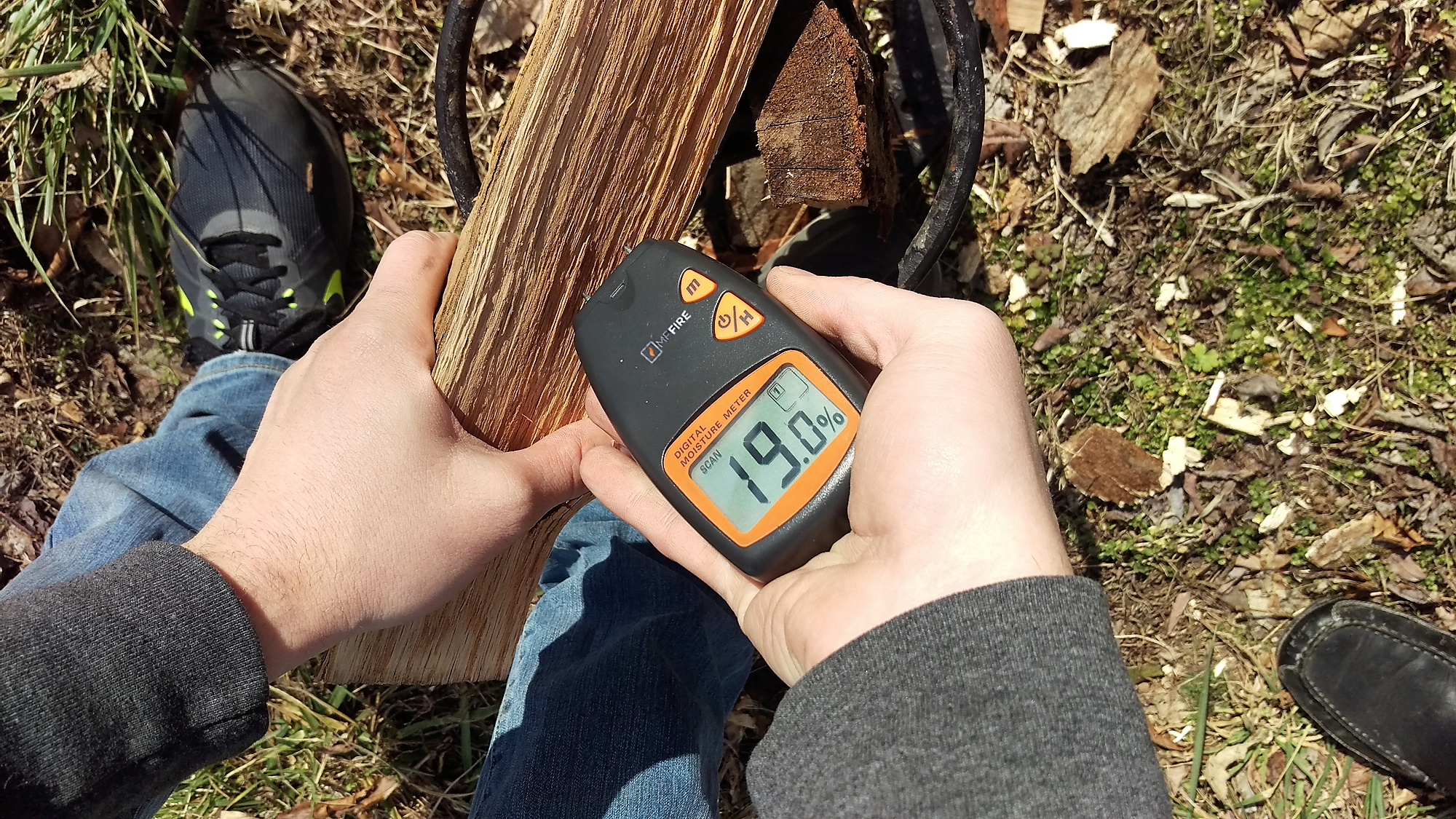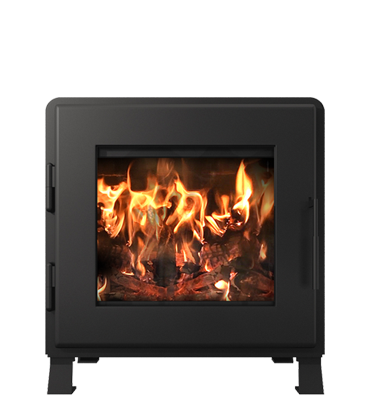Wood Stove 101: Using Seasoned Firewood

There are two main factors to consider when choosing the right wood for your wood stove: firewood type and firewood moisture content. In this post, we’ll discuss the importance of using good, seasoned firewood with low moisture content. To learn about choosing the right type of firewood for your wood stove, check out our other how-to guide post Wood Stove 101: The Best (and Worst) Firewood Types.
How big of a difference does using seasoned firewood make? It’s the difference between an inefficient fire that won’t heat your home and an efficient, beautiful, and clean fire. It is the difference between an easy to start, load and forget fire, and a fire that smolders and fails to start. Seasoned firewood is any hardwood having less than a 20% moisture content. Ensuring that you use wood with a proper firewood moisture content will dramatically increase the performance of your wood burning stove. Using firewood with a moisture content above 20% will cause poor operating conditions with your wood stove.
Why use seasoned firewood?
1. Increased efficiency: By using seasoned firewood, you increase the efficiency of your wood burning stove. Removing water from wood takes energy, energy that could otherwise be used to warm your home. The wetter the wood you use the worse your stove’s performance is. Using unseasoned wood with a moisture of 40% can lower your overall efficiency by up to 50%.
2. Easier startup: One of biggest complaints we hear regarding wood stoves is the effort needed during start-up. Due to the additional energy needed to burn wet firewood, it takes much longer to get a fire started with wet wood. Before the wood can burn, all of the water must be driven out. When you try to start a fire with wet wood, you will need more kindling — and sometimes multiple attempts — to get the wood hot enough to sustain a fire.
Stop fussing with your old, hard-to-use wood stove. Shop MF Fire today!
3. Cleaner burning: Not only does wet wood make start-up a pain, but it increases smoke and soot as the wood heats up. Smoldering fires emit harmful pollutants into your local community and home. The wetter the wood, the more harmful the pollutants created. Seasoning wood decreases these harmful pollutants.
4. Cleaner glass: All that smoke doesn’t do your glass any favors either. Smoke byproducts from unseasoned wood can stick to the glass. This build up obscures the fire. We all enjoy the look of fire, so let’s keep it visible.
5. Decreased creosote: Creosote is a top safety concern for wood stove users because it has the potential to cause chimney fires. Some creosote formation is inevitable, and regular chimney inspections and cleanings are a must. But burning wet wood dramatically increases the rate of creosote formation, and in turn increases the chances of a chimney fire. Using seasoned wood with the correct firewood moisture content helps to keep you and your family safe.
How Do I Know if I’m Using Seasoned Wood?
We highly recommend all wood burning stove operators use a moisture meter with their firewood. There are moisture meters available that quickly read your firewood moisture content. Just split a piece of wood and use the moisture meter to make sure the wood is under 20% moisture before burning.
If you do not have a moisture meter handy, there are a few other ways to determine if your firewood is seasoned. Seasoned firewood typically develops a faded color, usually gray or yellow, as it loses moisture. Additionally, seasoned firewood is lighter than wet firewood because of the lack of water within it. These methods of checking for seasoned wood are not fool proof, but they are good checks in a pinch.
Check out our beautiful, modern, and easy-to-use wood stoves!
How do I get and keep my firewood seasoned?
Whether you get your firewood seasoned or green you need proper storage to maintain the right moisture content.
- Stack the wood off the ground: Use a concrete pad or some other elevated structure to keep the wood away from the wet ground.
- Separate different stacks: When stacking several cords of wood, it is important to stack cords with spacing between one another. Separation between the stacks allows for increased air movement and faster drying.
- Cover the top of the wood stack ONLY: Covering the wood stack will keep rain from soaking it. Cover the wood stack with a secured tarp or a wood or metal overhang. Do not cover the sides of the stack as air movement through the wood is needed for drying out the wood.
If you’re seasoning wood, a good rule of thumb is to stage and store your wood for at least one season before use. If you are lucky enough to have a trusted supplier that delivers truly seasoned wood year after year, give them a nice holiday present – they are hard to find!
Wood stove users are all part of a special community – we all love beautiful fires! Get the most out of the time and effort you put into your stove by choosing the right firewood for your wood stove. Get clean and efficient heat, while making start-up a breeze. Use dry seasoned wood checked by a moisture meter – it is the single best thing you can do to enjoy this lifestyle.
If you like this article, be sure to click our like button below and share with your friends on Facebook.
 Ryan Fisher is the COO of MF Fire
Ryan Fisher is the COO of MF Fire





